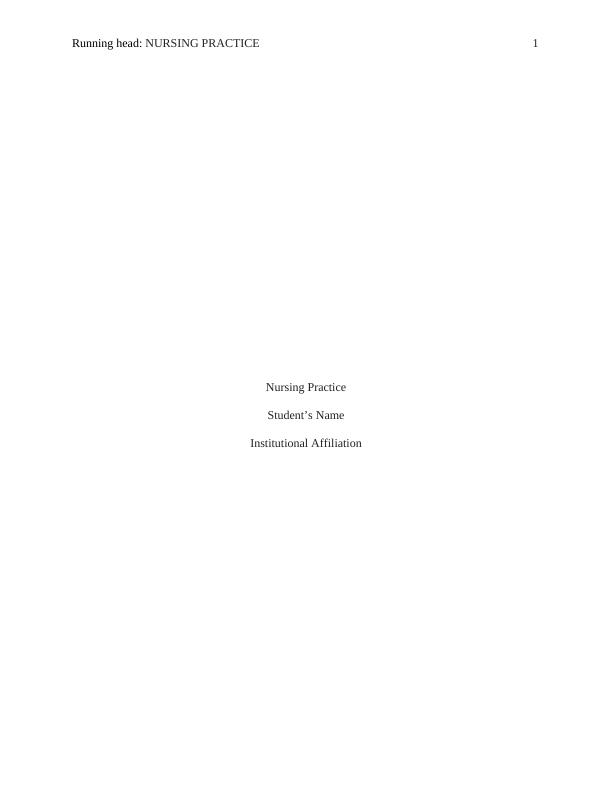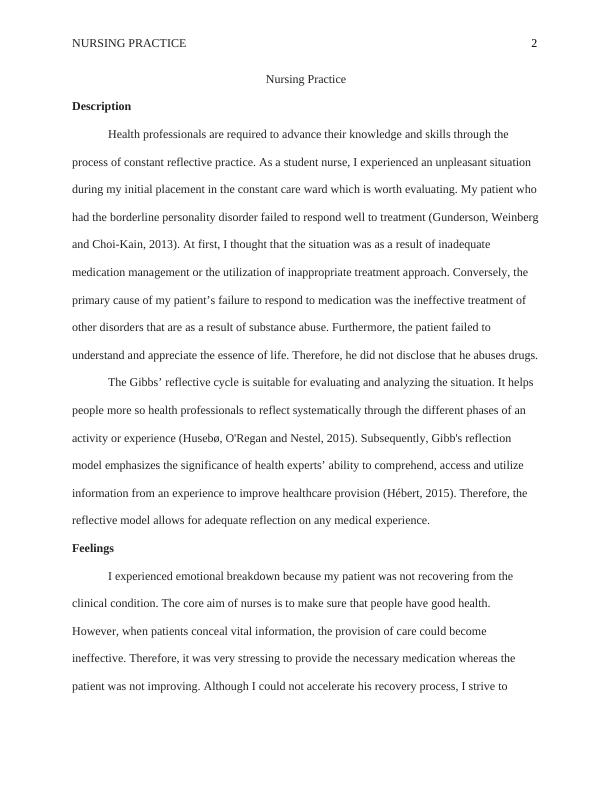Reflective Practice in Nursing: A Case Study on Borderline Personality Disorder
Reflect on a clinical event/situation encountered during placement using a recognized model of reflection, analyzing the event/situation and addressing knowledge level, understanding of the role and scope of practice, and areas for further development and learning. Two journal entries required, maximum 500 words each.
Added on 2023-06-11
About This Document
Reflective Practice in Nursing: A Case Study on Borderline Personality Disorder
Reflect on a clinical event/situation encountered during placement using a recognized model of reflection, analyzing the event/situation and addressing knowledge level, understanding of the role and scope of practice, and areas for further development and learning. Two journal entries required, maximum 500 words each.
Added on 2023-06-11
End of preview
Want to access all the pages? Upload your documents or become a member.


